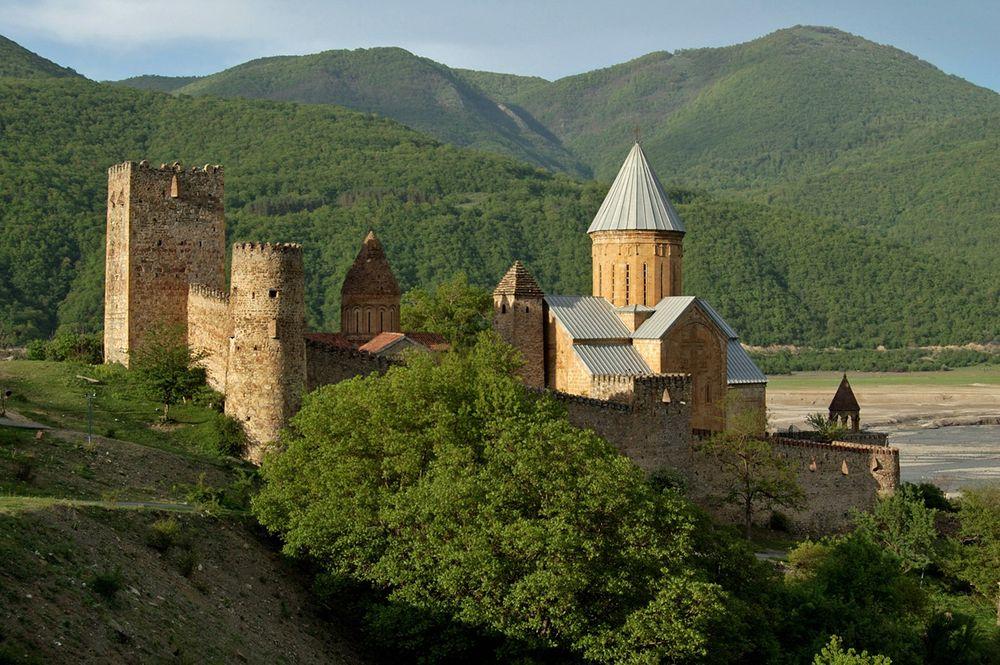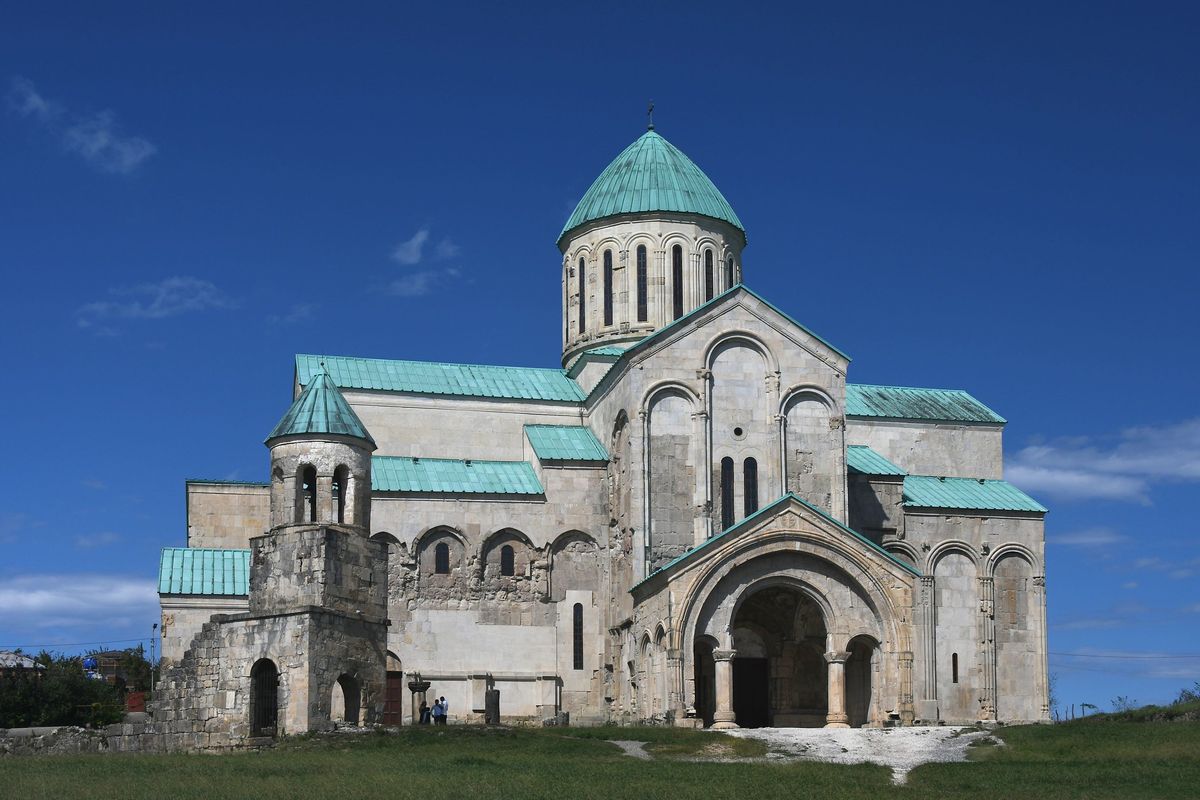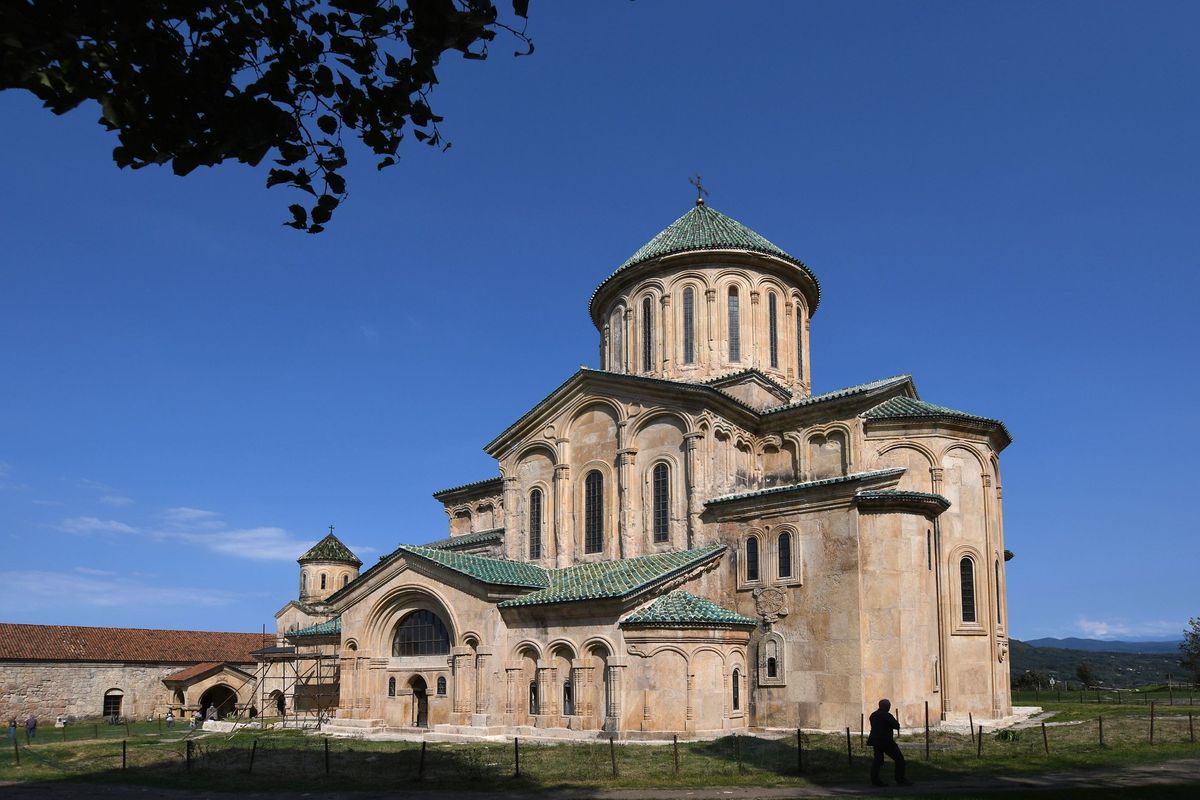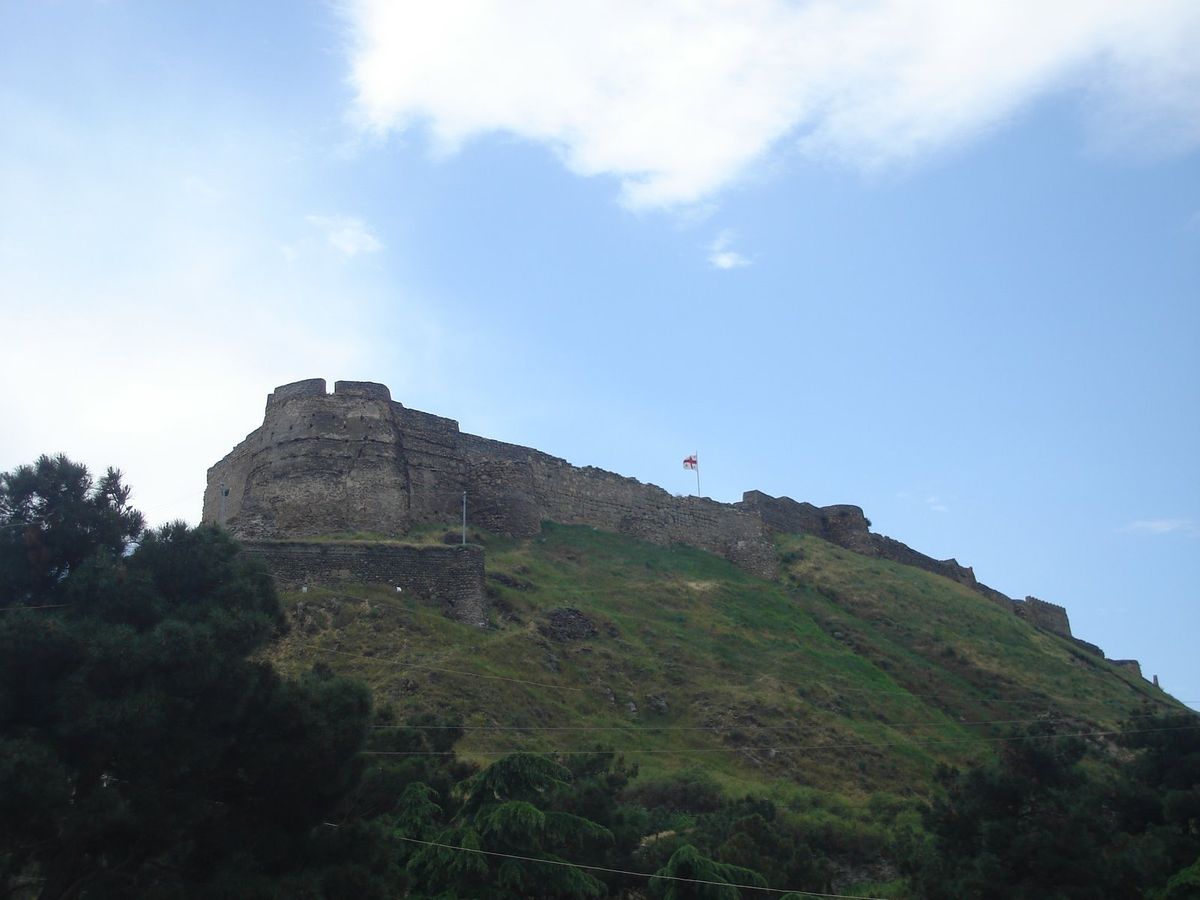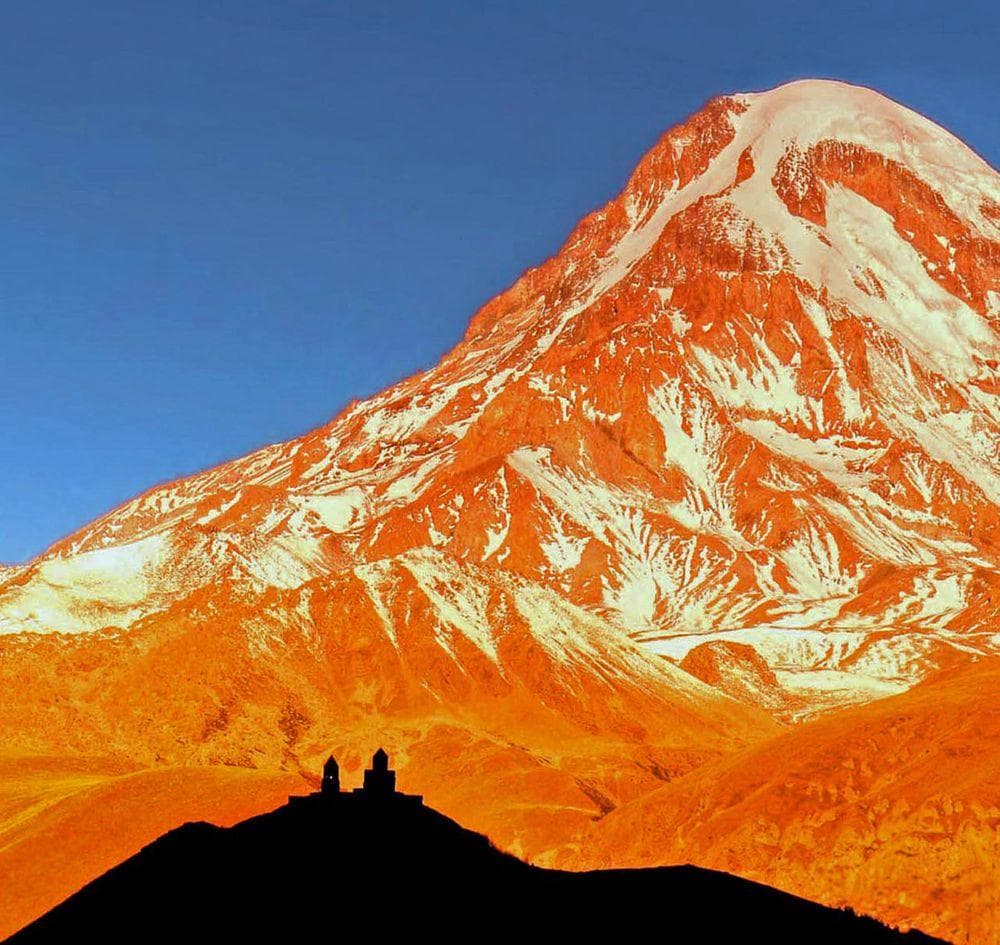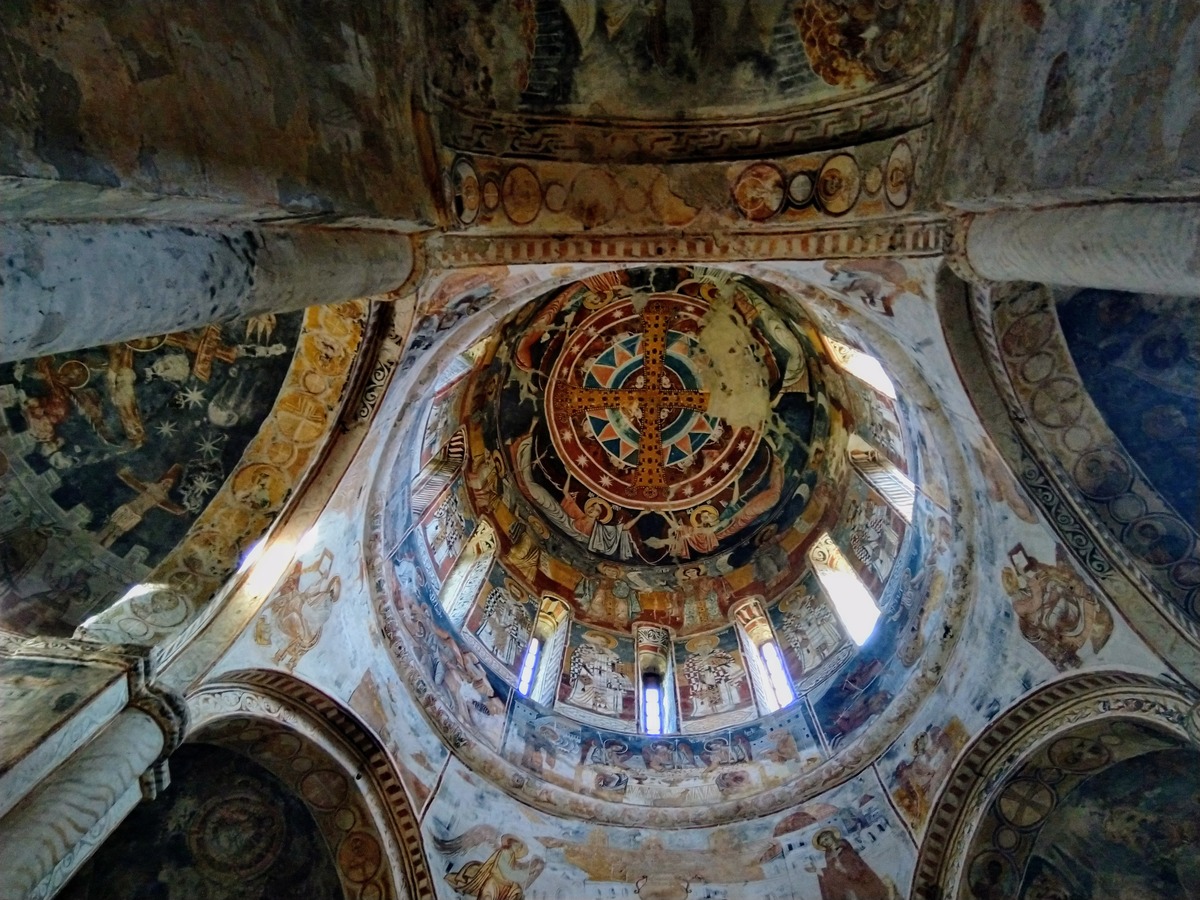Wondermondo 🢖 World 🢖 Wonders of Asia 🢖 Wonders of Georgia
Territory
Wonders of Georgia
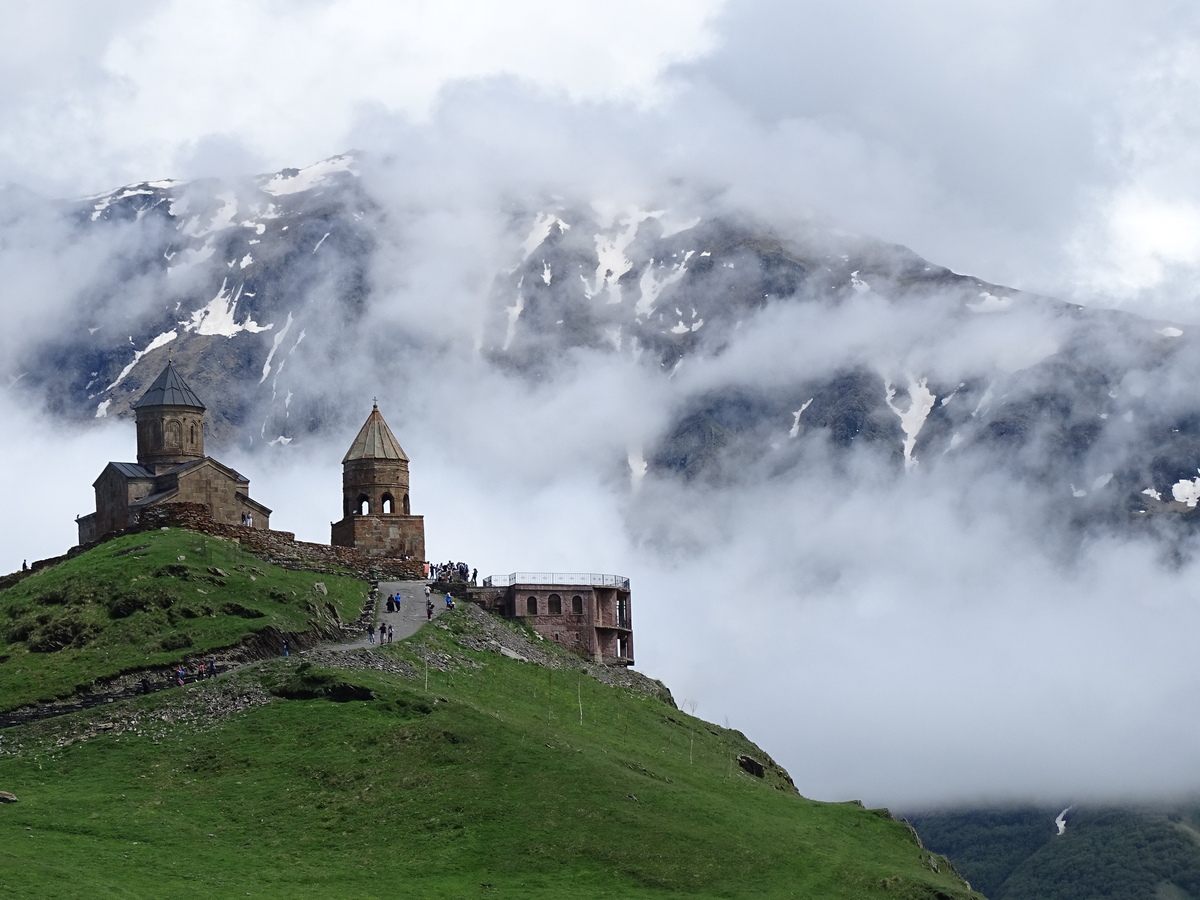
 Highlights
Highlights
There are a few small countries in the world with such a distinct culture and richness of natural and man-made wonders as Georgia. Here evolved distinct writing systems (in fact – several writing systems), their own styles in architecture and art.
The most amazing wonders of Georgia are:
- Churches – Georgia has its own distinct type of church architecture, with the most similar style of church architecture in the neighboring Armenia. This style is extensively used for more than one millennium and in many ways, it defines the man-made landscape in Georgia.
- Medieval villages with tower houses – tower houses in these villages were built to provide protection from the blood feud and other hostilities.
- Abysses in Abkhazia – four of the 10 world’s deepest caves are located in Abkhazia and the deepest one – Veryovkina Cave – is explored to the depth of a dizzying 2,212 m!
Map with the described wonders of Georgia
If you see this after your page is loaded completely, leafletJS files are missing.
 Top 25 wonders of Georgia
Top 25 wonders of Georgia
Geological wonders
Veryovkina Cave
Abkhazia
The deepest known cave in the world, 2 212 m deep. Discovered in 1968, but the full depth was reached in March 2018.
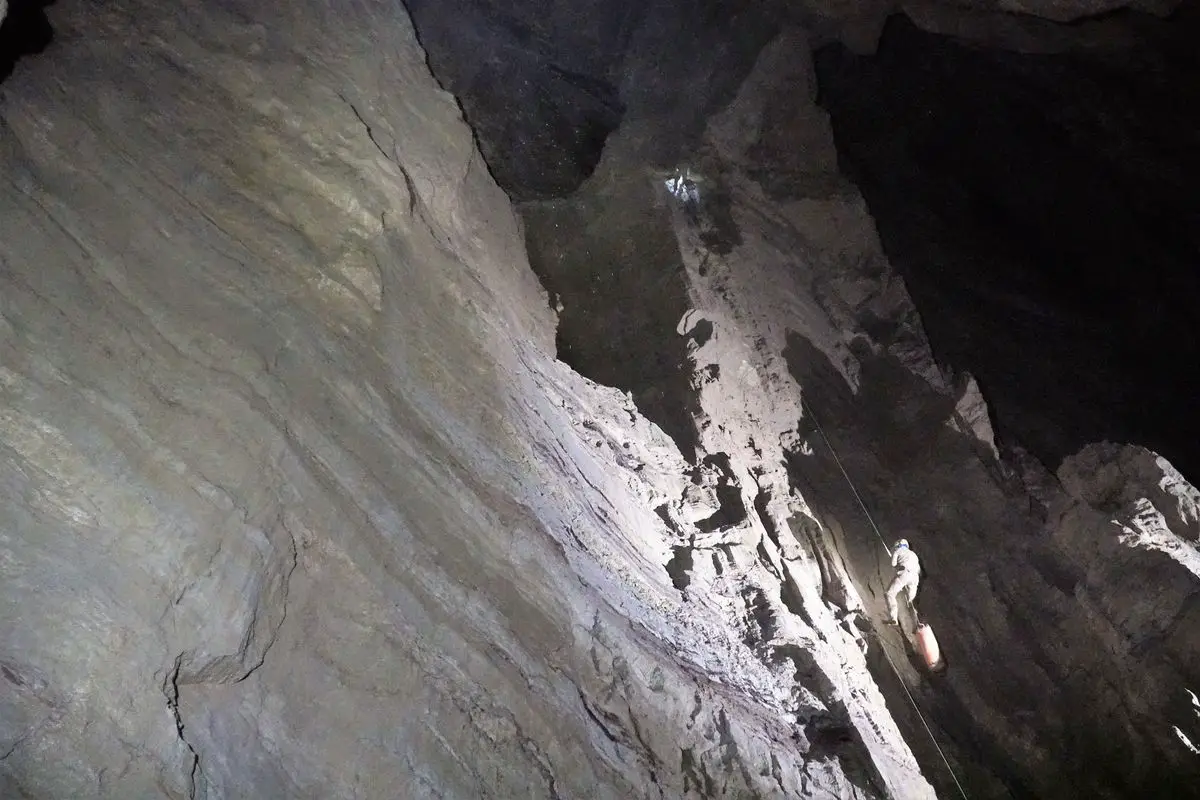
Krubera Cave
Abkhazia
The second deepest known cave in the world, 2,197 meters deep. This extensive cave system is also quite long – 16,058 m.
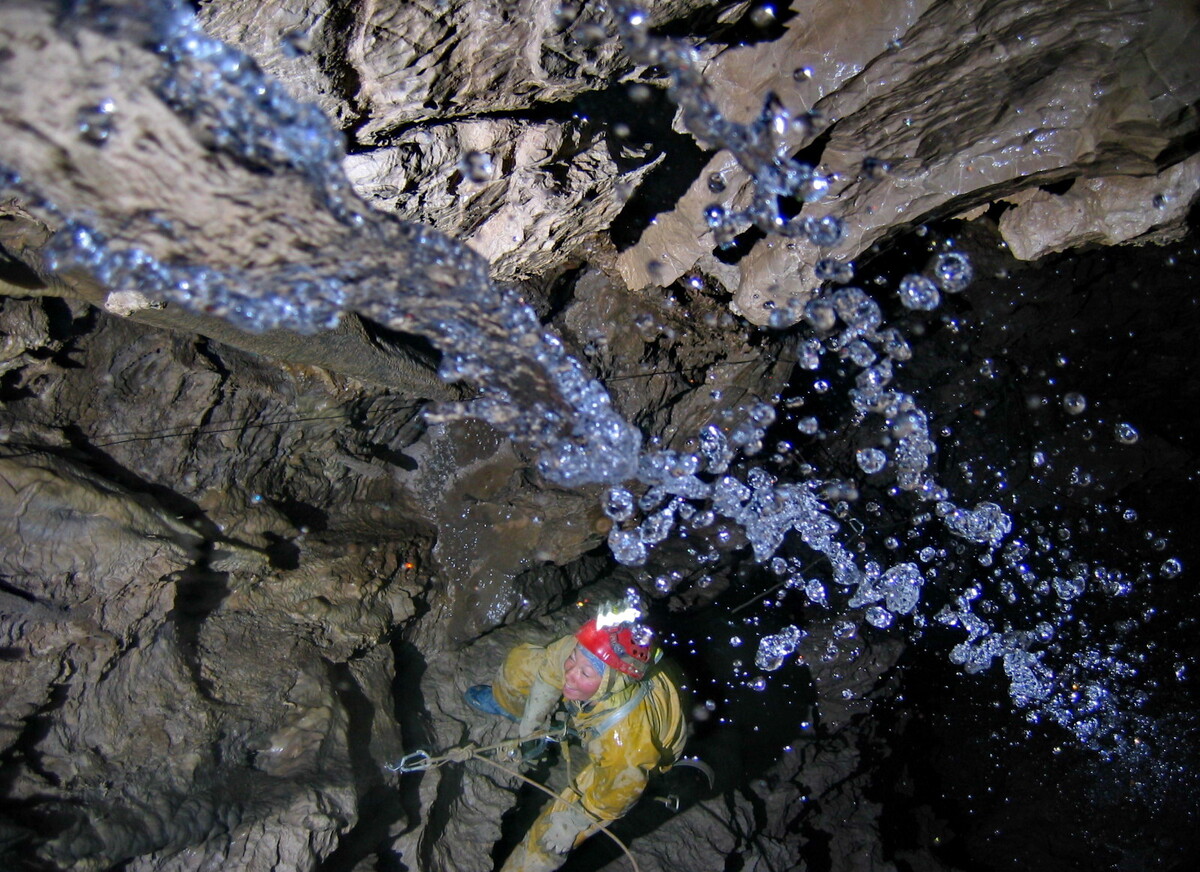
Illyuzia – Mezhonnogo – Snezhnaya Cave system (Snowy Cave)
Abkhazia
An enormous cave system, 1,753 m deep and 24,080 m long. One of the most complex caves for explorers.
Archaeological wonders
Uplistsikhe
Shida Kartli
Rock-hewn town, one of the oldest urban settlements in Georgia that started to develop in the Early Iron Age and was inhabited until the 14th century. Rock-cut architecture unites features of Anatolian and Persian architecture. On the summit stands the Christian basilica that was built in the 9th – 10th centuries.
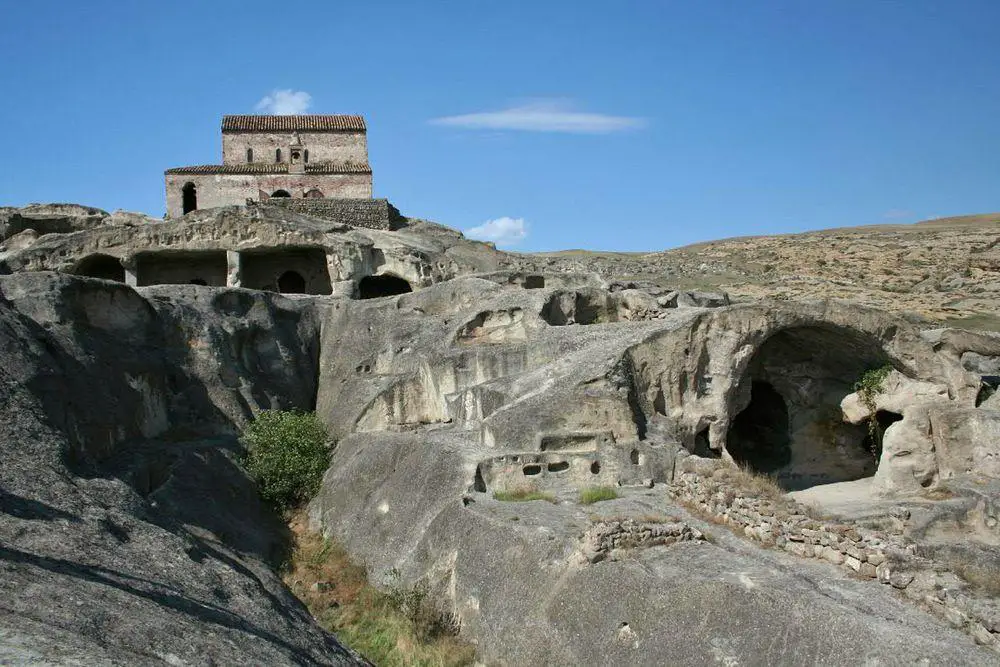
Shaori megalithic fortress
Samtskhe-Javakheti
Mysterious megalithic structure – fortress at the height of 2,750 m. Similar structures are the Abuli fortress (roughly in 1,500 BC) and the Saro fortress.
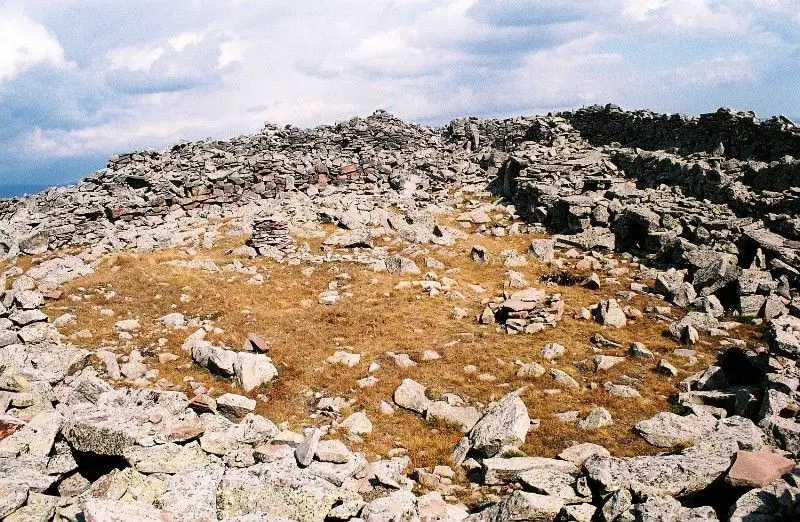
Armazi
Mtskheta-Mtianeti
Ruins of the original capital of the early Georgian kingdom of Kartli (Iberia), founded in the 3rd century BC, flourished in the early centuries AD and was ruined by Arabs in the 730s. The fortified citadel of Armazi is called Armaz-Tsikhe. There evolved a special system of writing – Armazi script.
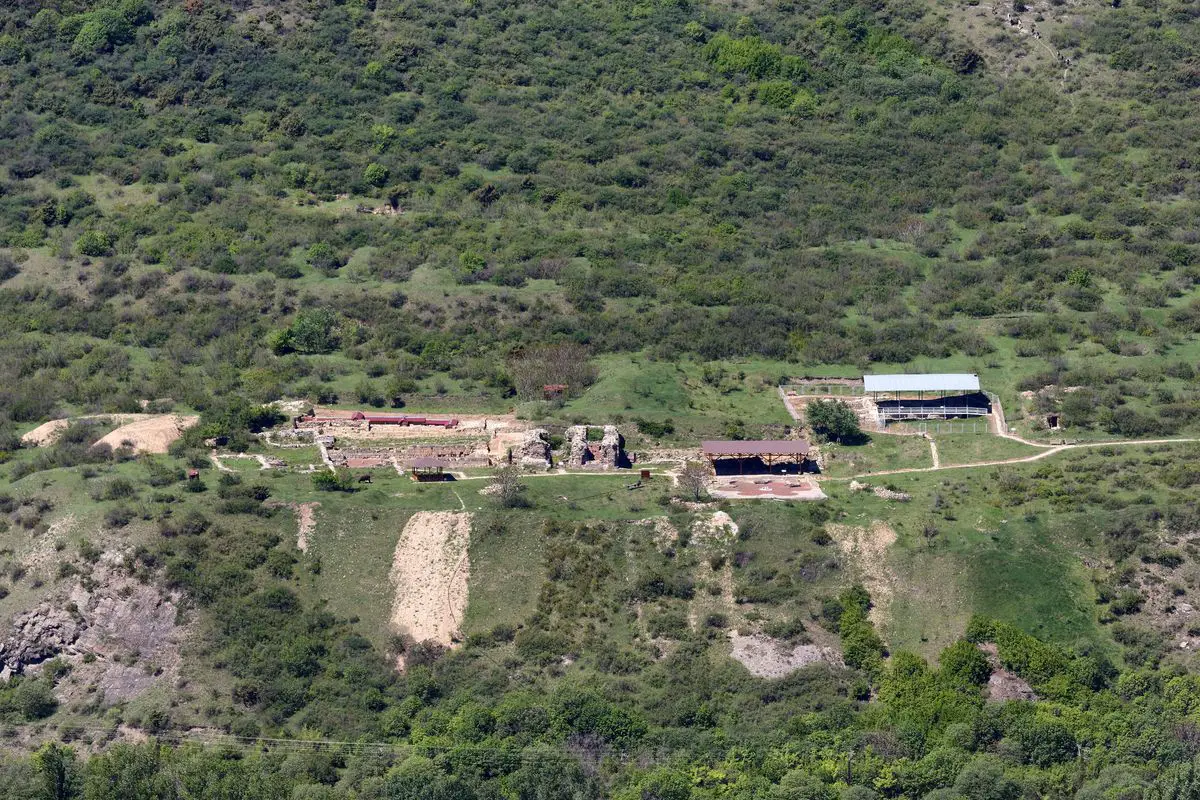
Architecture wonders
Ananuri
Mtskheta-Mtianeti
Twin castles that were built by dukes of Aragvi, built and rebuilt in the 17th – early 19th century. Both castles are connected by a massive curtain wall. The castle complex includes several churches. Church of Assumption (1689) includes fine frescoes.
Katskhi pillar
Imereti
Tall limestone stack – monolith with church ruins on it. This stack rises 40 m tall and it is very hard to reach its summit. Nevertheless, on the top of this monolith in the 9th or 10th century was built a hermitage – monastery.
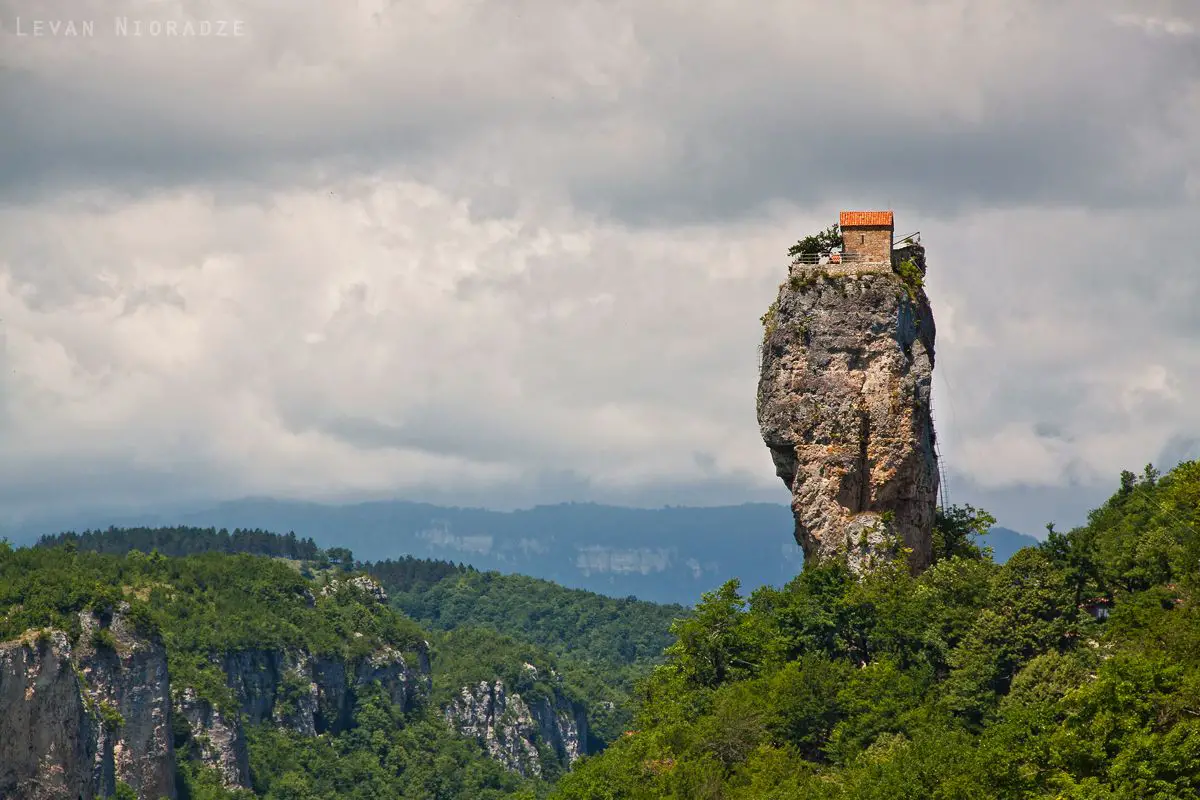
Jvari Monastery
Mtskheta-Mtianeti
One of the oldest Georgian Orthodox monasteries, built in 586 – 605 AD. This monastery was built on the mountaintop in the site of a former pagan temple and it is considered to be the most sacred place in Georgia. One of the earliest examples of the four-apsed church, characteristic in Georgia and Armenia.
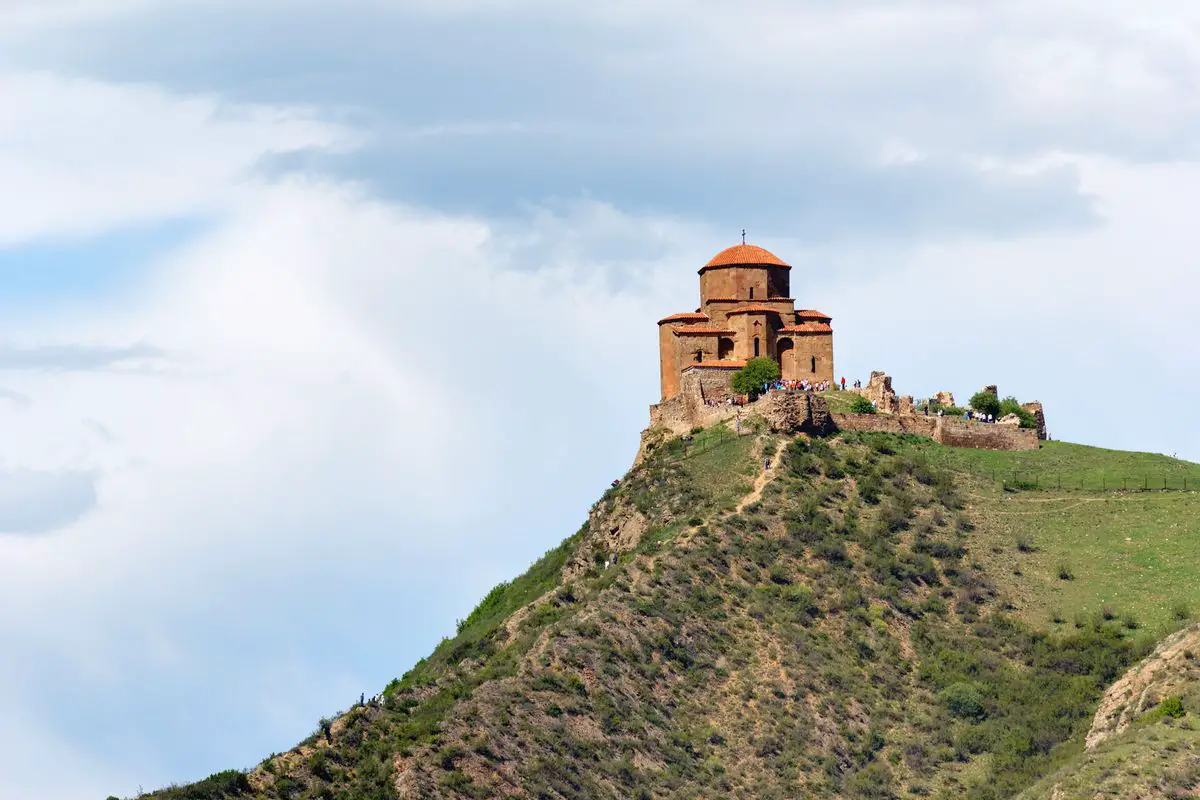
David Gareja monastery complex
Kakheti
An amazing complex of cells, churches, and other structures that were hewn into the cliff face. The development of the monastery started in the 6th century.
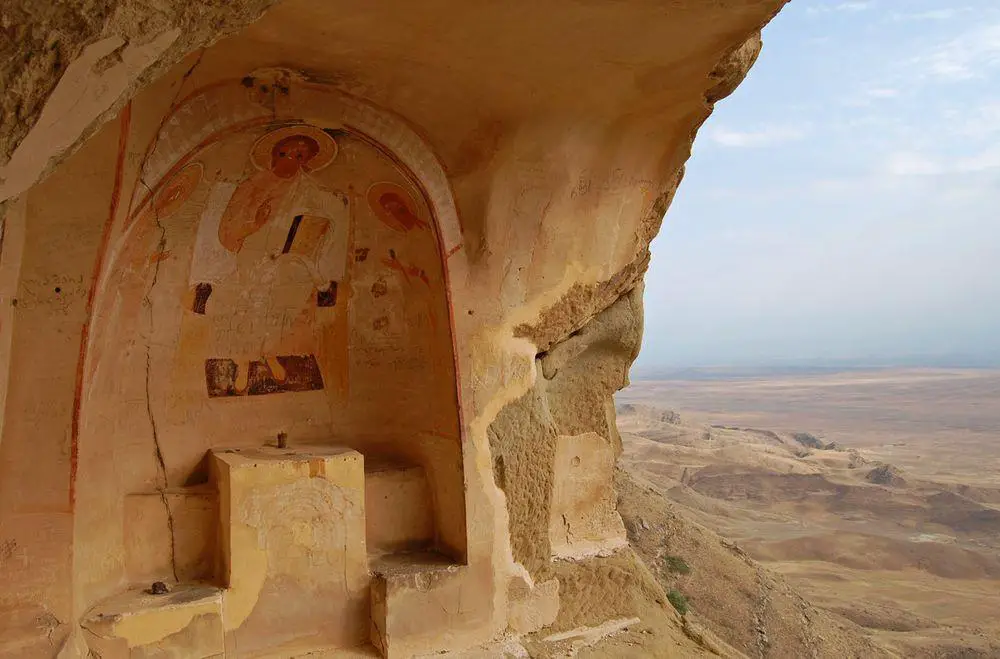
Mestia
Samegrelo-Zemo Svaneti
Small town, once an important center of culture in this region. Here are located several medieval churches and many tower-houses – fortresses (Ushguli).
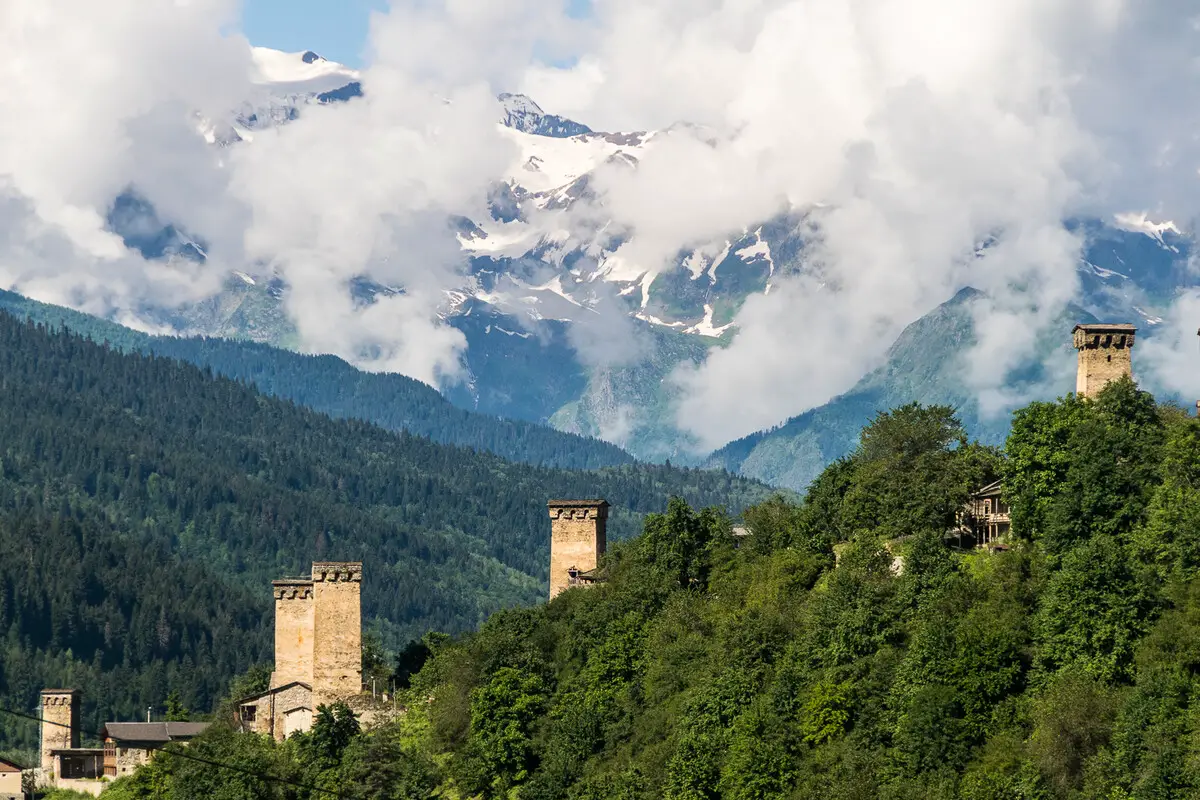
Bagrati Cathedral (Kutaisi Cathedral)
Imereti
This cathedral is a masterpiece of Georgian architecture. It was built in the early 11th century (most likely in 1003) and rebuilt in 2012. Cathedral was built in the times of King Bagrat III, the first king of united Georgia. Cathedral has beautiful mosaics and wall paintings.
Gelati Monastery
Imereti
A complex of monastic buildings that includes the Church of the Virgin (built in 1106), and other old churches. Since medieval times monastery houses Academia – one of the main cultural and intellectual centers in Georgia. There are stored numerous manuscripts from medieval times.
Gori Fortress
Shida Kartli
Impressive medieval citadel, built on a cliff towering above Gori city. Hill has been fortified already several millenia ago, the current structure was built in medieval times.
Dartlo
Kakheti
Picturesque village in the exotic region of Tusheti. In the village have been preserved medieval tower houses, including an especially tall tower with six floors.
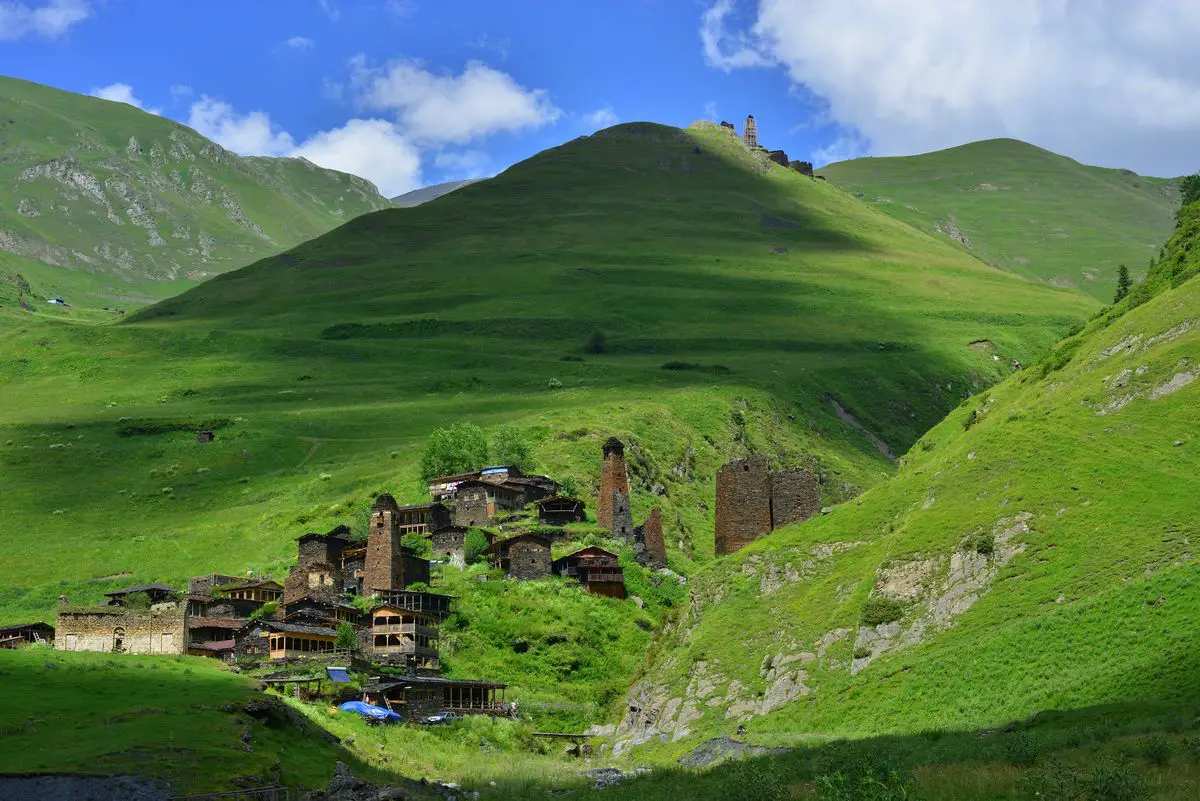
Vanis Kvabebi
Samtskhe-Javakheti
This cave monastery was developed from the 8th century AD. The monastery consists of a maze of tunnels in several layers, two churches, and a defensive wall.
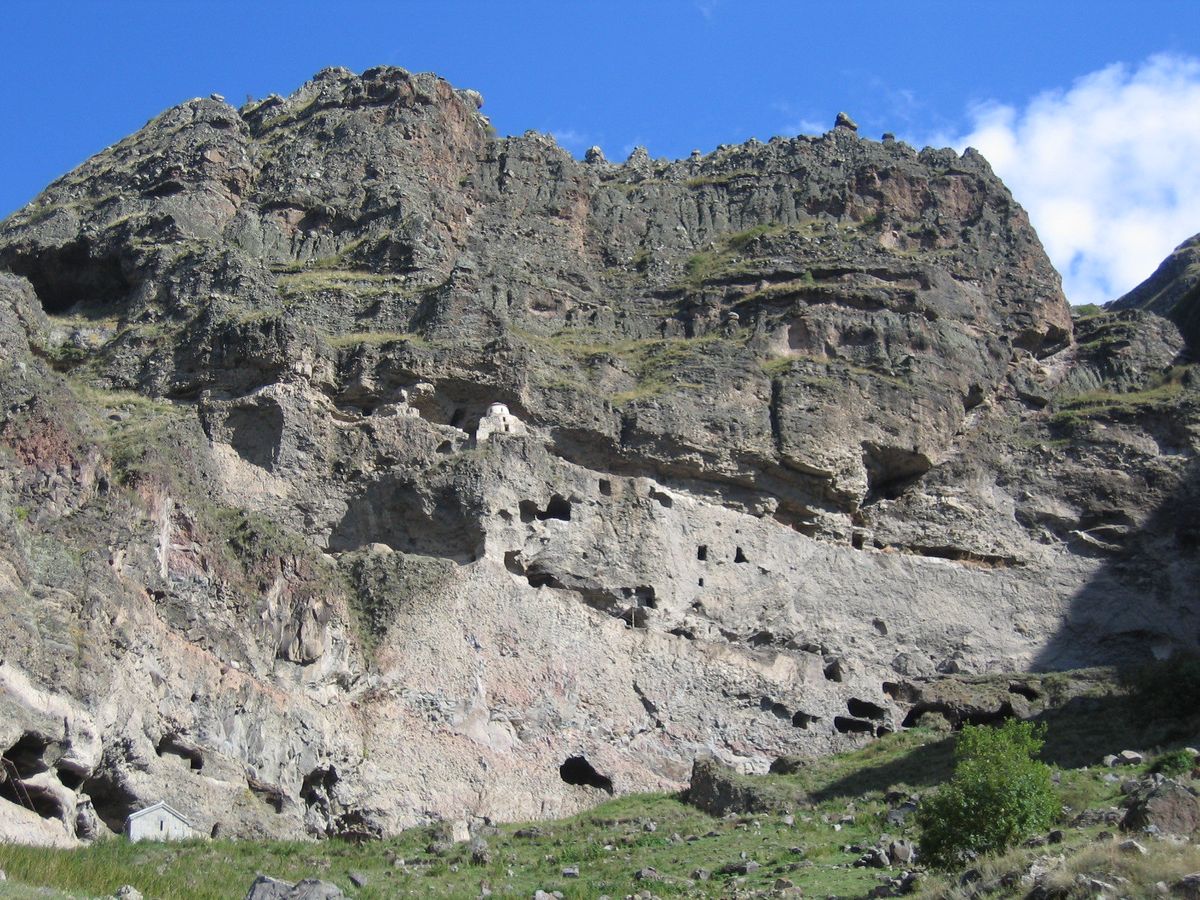
Samtavro Church
Mtskheta-Mtianeti
Large, impressive church, constructed in the 11th century. The monastery was established considerably earlier – in the 4th century.
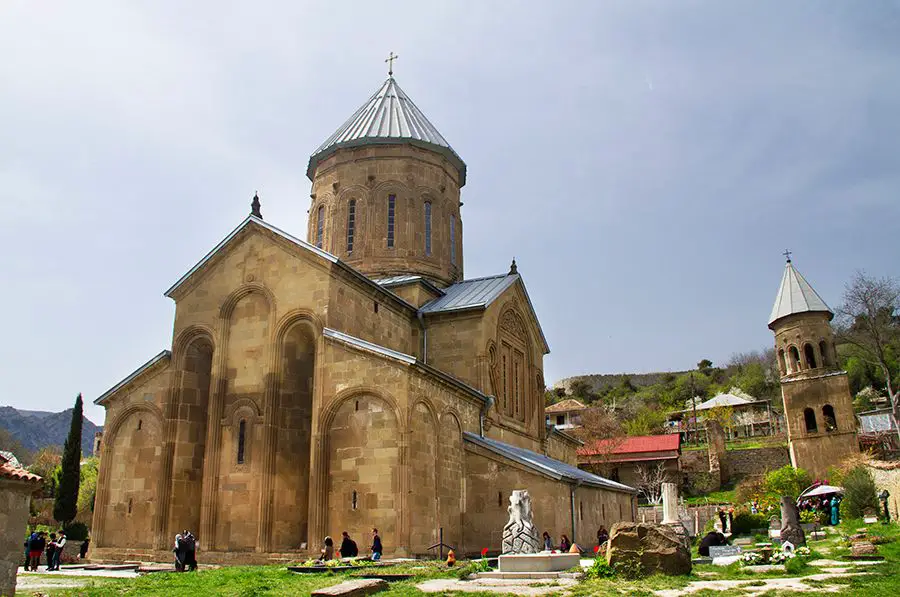
Old Tbilisi
Tbilisi
The oldest part of Tbilisi – the capital of Georgia since the beginnings of a unified state in the 11th century AD. This part of the city contains numerous monuments of architecture, streets here are narrow and covered with cobblestone, and houses have ornate balconies.
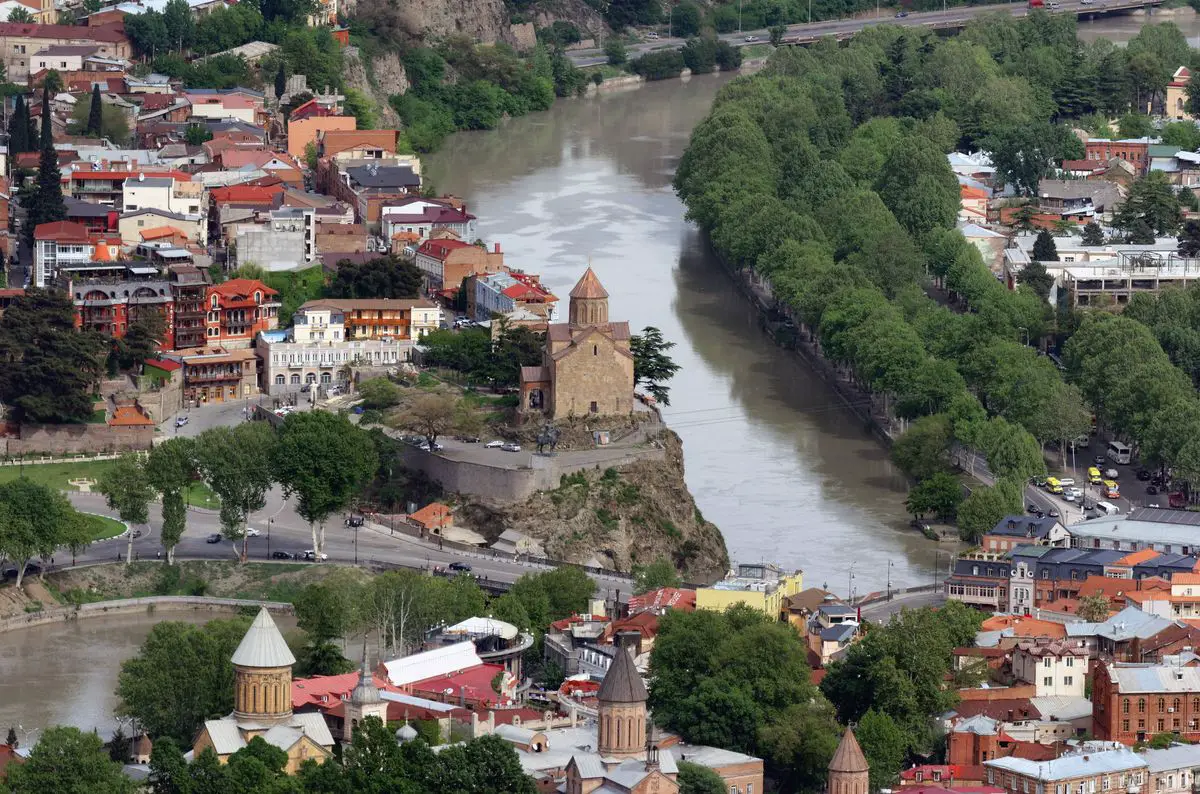
Gergeti Trinity Church
Mtskheta-Mtianeti
Medieval church in mountains, at the height of 2,170 m. Constructed in the 14th century AD.
Svetitskhoveli Cathedral
Mtskheta-Mtianeti
One of the principal Georgian churches. It is venerated as the location of Christ’s mantle. Built sometimes around 1020.
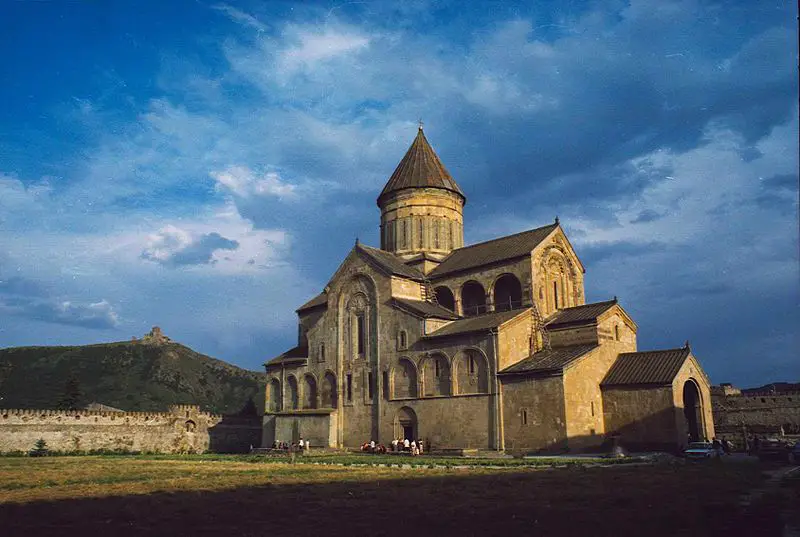
Shatili
Mtskheta-Mtianeti
A picturesque village in mountains. The village represents a complex of fortified buildings with some 60 towers.
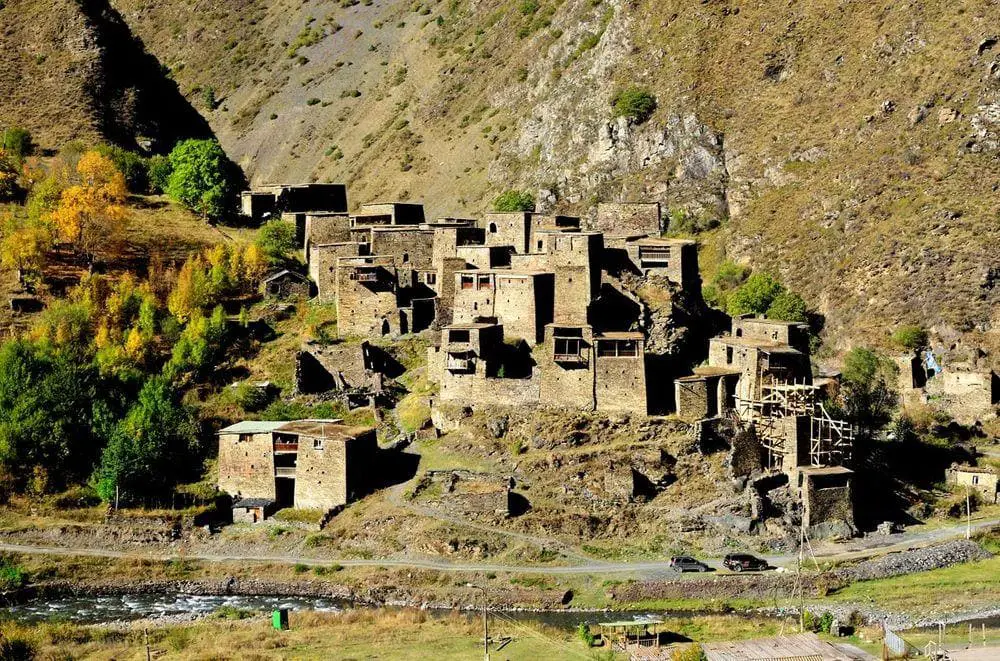
Adysh (Adishi)
Samegrelo-Zemo Svaneti
A picturesque village with many architectonic landmarks, such as the Church of the Deliverer (the 10th – 11th century), other medieval churches, and tower houses.
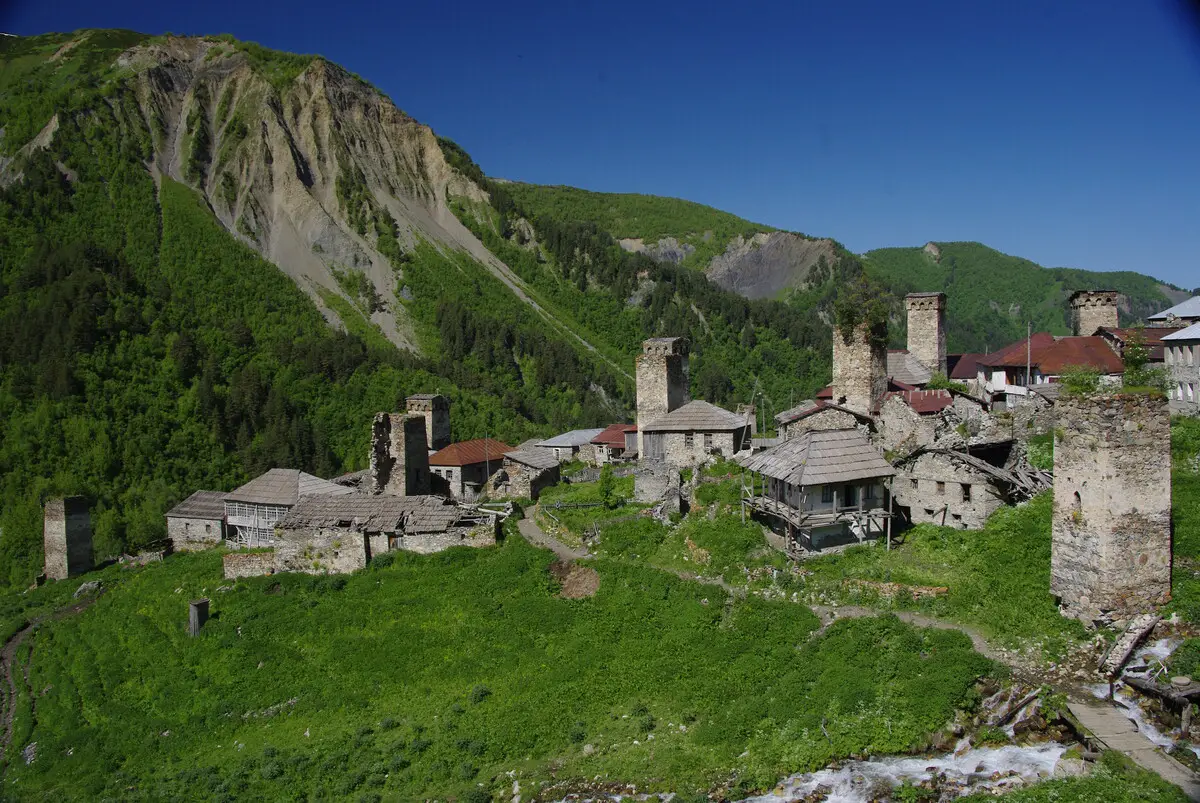
Nikortsminda Cathedral
Racha-Lechkhumi and Kvemo Svaneti
An ornate medieval cathedral that was constructed in 1010 – 1014. Inside are frescoes that were made in the 17th century.
Nokalakevi (Archaeopolis)
Samegrelo-Zemo Svaneti
Impressive ruins of the fortress – settlement of Byzantium. This settlement was inhabited since the 8th century BC but the enormous fortress was built in the 4th – 6th century AD.
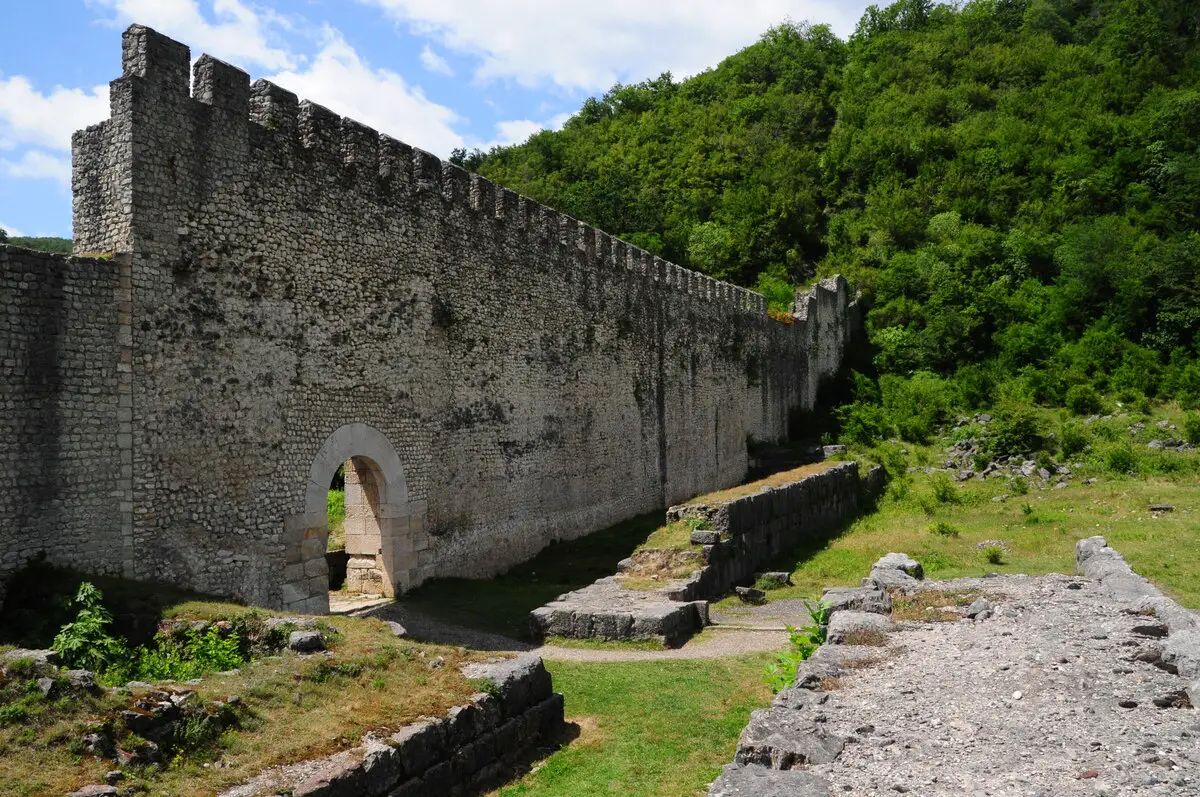
 Recommended books
Recommended books
Edge of Empires: A History of Georgia
Located at the crossroads of Western Asia and Eastern Europe, Georgia is a country of rainforest and swamps, snow and glaciers, and semi-arid plains. It has ski resorts and mineral springs, monuments, and an oil pipeline. It also has one of the longest and most turbulent histories in the Christian or Near Eastern world, but no comprehensive, up-to-date account has been written about this little-known country—until now.
Georgia (Bradt Travel Guide)
This new edition of Bradt’s Georgia, the only dedicated guide to the country, has been thoroughly updated throughout, with greatly expanded coverage of Batumi, Adjara, and Svaneti. The capital, Tbilisi, has seen huge changes in the past decade with some conspicuous new projects such as the Peace Bridge, the Opera House, and Saakashvili’s Presidential Palace.

